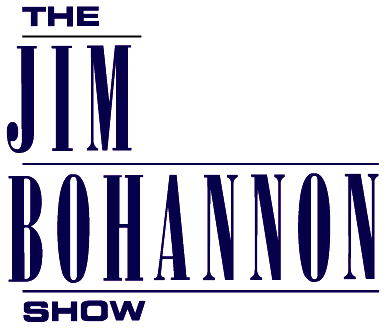The Rise of Insurgent Brands
In every marketplace insurgent brands are kicking ass. Now you have a choice: learn to think, plan and act like an insurgent brand, or get used to losing.
Our company got its start in politics. In the mid-1980s, Steven Jobs called on us: “You guys understand something we don’t really get. It’s the finality of Election Day. You have to get 50.1% or go home. You have sharper strategies and sharper elbows in politics than we do in business.”
That’s how and why we began developing the insurgent political model for business. Our company, Sawyer/Miller Group, had done many insurgent political campaigns in the US and abroad — hardline incumbents, often dictators, versus underdogs: Corazon Aquino, Kim Dae Jung, Lech Walesa, Vaclav Havel and many others.
For Apple, we created an insurgent political model to use as a competitive strategy against the tech industry incumbents. It worked.
Thirty years later, that insurgent strategy—transferred from politics to business—is even more important. Today, in every industry and every market, insurgent brands are challenging the traditional market leading incumbents. And they are succeeding. While the incumbents continue to waste billions on obsolete mass manufacturing, mass distribution, sales and marketing strategies, the insurgents are beating them, often bringing them down on a shoestring.
If you want to win in today’s markets with today’s consumers, you have to learn to think, plan and act like one of these insurgent brands; no matter the size of your brand and company and no matter your place in the market. Needless to say, insurgents hold the trump cards today not just in business, but also in politics, warfare, sports, the arts and everything else.
Speed and mobility beat size and scope in this new age. Vision beats heritage. Authenticity kicks the crap out of mass marketing. In fact, if there’s one thing that separates the rising insurgents from the endangered incumbents, it’s the issue of change. Established leaders hate change. Change means threat. But true insurgents love change. Change means opportunity. It means the molecules are in motion.
Insurgents Rising
The fragmentation of mass media and the ubiquity of Internet access and search provide instant information, infinite choice and constant change in all industries. This turbulent environment has moved from digital to wholesale to retail; from bricks to clicks and back again. As a result, the big guys have new competitors — thousands of them, coming at them from all directions.
In fact, the biggest of the big guys — Apple, Facebook, Google and Amazon — are all insurgents (most of the time). Today’s insurgents seem to appear suddenly out of nowhere. After all, the barriers to market entry and onto the market shelves have been lowered to the level of minor speed bumps as distributors and retailers have noted this new consumer behavior.
Sergio Zyman, the iconoclastic former Chief Marketing Officer of The Coca-Cola Company, knows why. “Give people choice,” he says. “And they will always choose to choose.”
This is particularly true of so-called “Millennials” and “Generation Z.” More and more of them act with the self- confidence of early adopters, those consumers who get their social currency from leading others to new brands, new ideas and new sensations.
The problem with incumbent brands is early adopters don’t like big, institutional sameness, and they sure as hell don’t like being led to those brands by the “push marketing” techniques of mass marketing. Those tactics have sharply declined in effectiveness over the past decade, though the biggies continue to use them. Optimization continues to drive incumbent market strategies, while these new consumers insist on customization. “One-size-fits-all” is as dead as the tube sock. It’s down on Layer 34 of a composting recycling center.
The Importance of Discovery
Doing research for a huge consumer packaged-goods company a while ago, we interviewed a young Indie rocker about a new product of theirs. He liked it a lot. And he had some advice, “But, like, just don’t advertise it. Okay?”
“Then, like,” admittedly, we were kind of snarling: “How are they supposed to tell you about this great new product?”
“Oh, just, like, leave me some bread crumbs.”
Actually, that was terrific advice. Early adopters love to find new ideas for themselves. Discovery is central to insurgent marketing. They want to find it, and they want to find it rubbing elbows with other brands that give the same vibe of newness, distinctness and authenticity. Then, they want to tell their friends about it. Although a lot of early adopters are highly digital, they prefer to share in person rather than clicking on it. That’s where they get their social currency.
No matter what you think of the intelligence of American consumers, we can guarantee they are geniuses about mass marketing. They’ve been up to their nostrils in it all of their lives. They can smell it a mile away.
Another time, we were interviewing a young beer drinker in Alabama about Miller Genuine Draft. This kid had more tattoos than teeth. He had on a brand new Rusty Wallace #19 Miller Genuine Draft black and gold baseball hat. And he had on a brand new Rusty Wallace #19 Miller Genuine Draft black and gold t-shirt. “So, Rusty Wallace,” we commented.
“He’s my man,” he said.
“You go to NASCAR races?”
“Six last year.”
“Watch ’em on TV?”
“Yes, sir.”
“Just curious,” we said. “What brand of beer do you drink?”
“Busch,” he answered. “Why?”
“Well, Jeezus,” we were getting impatient. “Why do you think Miller Genuine Draft sponsors Rusty Wallace? Why do you think Miller Genuine Draft does Rusty Wallace commercials? Why do you think they give away freaking Rusty Wallace hats and freaking Rusty Wallace t-shirts?”
“Because they can,” he replied with not one ounce of irony.
Holy shit! He was exactly right. That’s why Miller was sponsoring Rusty Wallace. That’s why Coors Light sponsored the NFL. Yes, their target market likes NASCAR and football. But that just doesn’t seem to compel them to buy the sponsoring brands. In the beer business, young guys are more and more often choosing and guzzling craft brews, not the big spending market incumbents. Why?
Part of the answer is that those kids identify with the insurgent brands more than the incumbents. Our current political reality surely proves that the US is not an incumbent-friendly country.
Those young people like the uniqueness, the interesting narrative, and the to-the-marrow authenticity of those brands. These are the “badge brands” of this generation. In general, Americans young and old are very skeptical of bigness these days. Ask Jeb Bush: they hate the establishment.
Broadcast advertising has a credibility level somewhere in the low single digits. It’s a national assumption that TV commercials are bullshit. But the recommendations of their friends and work colleagues have credibility in the 80% level. Word-of-mouth is the most powerful advertising medium on the face of the earth.
The Six Cs:
We’ve done a lot of studying of consumer decision-making across a myriad of categories of products and brands. And we’ve found that six factors drive most decisions, whether trivial or serious—and these six particularly drive the decisions pushing the success of insurgent brands:
- Control: Consumers want to make decisions that give them a greater sense of control—control of their personal security, economic well being and health, and protection from large and powerful institutions.
- Choice: More choices in any market give the consumer more of a sense of control.
- Change: Consumers now anticipate the disruptions of all markets by change. And they like that. Change creates more choices, and Steven Jobs taught consumers that change most often means better, faster, easier and sometimes cheaper choices.
- Customization: As we said, one-size-fits-all is over. Search guarantees youcan eventually find that one size that fits just you.
- Connection: Though consumers are more individualistic in behavior these days, they continue to want to associate with brands for “people like me, people I like and people I’d like to be like.” Social media provides the glue for these connections.
- Convenience: Ease of accessibility and ease of use are still the code breakers for the entry of new products into most categories.
Summary
As never before in memory, the top brands must fight for their lives against the smallest brands. And it isn’t a fair fight. There’s a new set of rules. At Core Strategy Group, we call it The Underdog Advantage (That’s one of the books we wrote. The Leadership Campaign is another that’s out this Spring).
Learn to play by these rules, the rules of the insurgent brands, of the underdog, or you will have to learn to lose.
David Morey and Scott Miller
 Romney gets personal, more likable
Romney gets personal, more likable The Point: The Underdog Advantage
The Point: The Underdog Advantage








